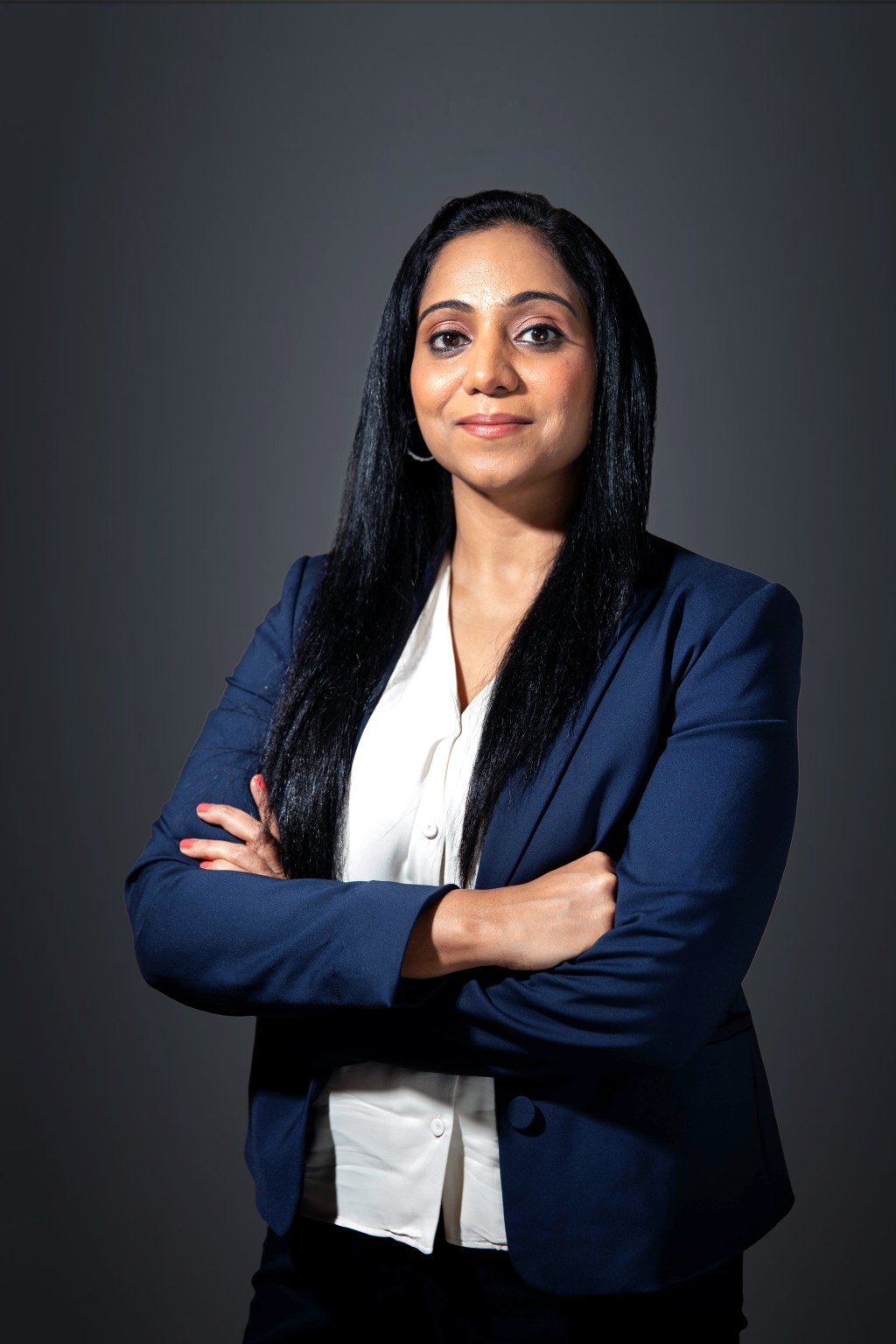Competition has heightened dramatically since Myntra, one of India‘s first focused fashion ecommerce players, first launched in 2007, was then acquired by etail giant Flipkart in 2014, which in turn saw a majority investment by Walmart two years later.
In an exclusive interview with WWD, Nandita Sinha, Myntra’s chief executive officer, was quick to point out that differentiation and trend setting have become key.
“We have the largest premium customers in the country and that continues to grow. We have 6 million customers who visit us 30 times a month, so we are like their Instagram, they come to us for inspiration – then they seek the products and make purchases. This adds into the large premium customer base that we have built over the last few years, which allows us to build new brands and scale in this country. We are adding new brands but we are also adding Gen Z and young customers, approximately a 175 percent year-on-year growth in customers,” she said, adding that the reach extended to more than 19,000 Pin codes across the country.
The numbers have been growing: 75 million new users on Myntra who visited for the first time last year; 55 million to 60 million users visited the platform every month over the last year; an average of one million views a day for Myntra Minis, the platform’s proprietary short-video content format, according to the company’s statistics.
Analysts see 2024 as a turning point for fashion retail in India, and competition has been growing, with industrial groups Reliance Retail (ajio.com) and Tata Ltd. (tatacliq.com) having deep pockets and aggressive growth plans. Amazon India and Flipkart continue to be big players while Nykaa fashion is gaining ground.
Sinha is clearly excited by consumers’ focus on global brands, and their hunger for them, which is still unabated.
U.K. retailer Next signed up to open branded stores in India and scale its omnichannel presence via Myntra at the end of last month, with plans to open eight to 10 stores in key Indian cities, including New Delhi, Mumbai, and Bengaluru within the first few years of operations, along with an extensive online presence on Myntra’s platform.
“With a successful trajectory of growing Next online in India, our first year of working together has resulted in establishing the right product, audience and price fit in the country. With a strong playbook in exponentially building adoption for global brands ground-up, we are looking forward to unlocking the next phase of growth in the brand’s India scale-up journey,” Sinha said.
The joint venture with Spanish brand Mango to open both physical stores and an ecommerce site and omnichannel segment has worked well, she said, with more than 110 physical stores across the country since 2017 when the omnichannel association began. The deal gave Myntra master franchise rights – meaning its B2B wholesale operation would manage the Mango stores in India through its network of third-party retailers.

Bollywood actress Kiara Advani for Mango.
The focus on bringing in global brandsm – which already include H&M, Levi’s, U.S. Polo Assn., Tommy Hilfiger, Louis Philippe, Jack & Jones, Mango, Forever 21, Marks & Spencer, Nike, Puma, Crocs, and Fossil – has been stepped up.
The market is far from satiated, Sinha explained. “With 30 international brands in 2016, this number has already crossed to more than 400 leading international fashion, beauty and lifestyle brands, on our platform,” she said, adding that 50 brands will be launched this year.
“There is a lot of opportunity to build brands in this country. The progress we have made with international brands has been a huge step forward, not just for ourselves but for Indian retail in general – we have been building it strategically, with growing capabilities across formats. There’s a lot of room for growth – if you look at the overall market for fashion, it is a $100 billion market but only 40 percent of it is branded.
“As we went through this journey of scaling up brands, we realized that it’s very important to have an online-first conversation, which is then supported through omni and offline because the aspiration of international brands is spread across the country. We were able to scale significantly when we got the offline and online together, for example with Nautica, in the three years since we took over the licensing. Similarly with FCUk, which we launched [this January] and has been growing almost 2.6 times of what it was earlier, by bringing these two elements together,” she said.
There has also been a geographical shift of consumers within India.
“If you look at Tier 2 cities [the second-largest after the metro cities of New Delhi, Mumbai and Bengaluru], they contribute almost 45 percent of our aggregate business and that really is a testament to the kind of demand that is sitting outside the main cities, where it is easier to get quality retail footprint in,” Sinha said.
Her point is borne out by analysts. A study by real estate consultants CBRE South Asia earlier this year reported that both international and Indian brands were making inroads into smaller towns as they reached out to these ‘more aware’ consumers.
“The e-commerce boom, tech-savvy consumer base, growing aspirations and surge in discretionary purchasing are defining the retail growth in Tier-II cities,” said Anshuman Magazine, chairman and CEO, India, Southeast Asia, Middle East and Africa, at CBRE.
Fast growing cities beyond the existing retail strongholds of New Delhi, Mumbai and Bengaluru include Chandigarh, Jaipur, Indore, Mangaluru, Kochi, Lucknow, Patna, Ranchi, Guwahati, Bhubaneshwar, Visakhapatnam, Mysuru, Coimbatore and the state of Goa, with 14 of these cities having a total of 29 million square feet of retail space as of September 2023. Jaipur, Lucknow, and Chandigarh each boasted retail stock ranging between 3 million and 7 million square feet, said CBRE.
Then, there is Maya.

Looks from Myntra’s spring-summer collection.
While the word itself means illusion, Maya is an AI-created influencer who helps mix, match, choose and plan style preferences, bringing in fun and tech – which Sinha described as a key part of the way forward.
“We have leveraged generative AI in a very big way. Las,t year we launched a few tools with generative AI that were purely meant for assistance because fashion is a category that requires both assistance and inspiration. We launched ‘myfashiongpt’ which throws up the right set of recommendations, and ‘mystylist’ to help pair things to create a look. Maya adds to these assistance tools,” Sinha said.
While revenues continue to grow, so do losses. In the financial year ending March 31, 2023, Myntra saw revenues climb 25 percent to 43.75 billion rupees, or $525.09 million.
But net losses climbed 31 percent year-on-year to 7.8 billion rupees ($93.90 million) in the 2022-23 financial year over the previous loss of 5.9 billion rupees ($71.72 million).
Sinha appears unfazed.
“We’ve grown approximately 2x of ecommerce over the last two quarters and that is something we continue to do and even at size we continue to outpace the growth of ecommerce in fashion and therefore we are very clear about our value proposition, about our customer and we continue to see that we gain market share on the back of that,” she said.
“I think the other opportunity that everyone is talking about this year is the premiumization of the customer that is happening. If you look at the recent Goldman Sachs report, 60 million affluent Indians is going to become 100 million over the next three to four years. This was 35 million a few years back, so you can already see that growth happening. This is going to continue to grow and drive the market, and has been a focus for us, and helping us stay 2x ahead of the market.”
While Bollywood remains an obsession, trends are also being driven by social media influencers, Sinha observed. Storytelling has been a major source of inspiration, along with ‘social squads.’
Even though Sinha acknowledged modestly that she has had a “great set of colleagues, mentors and family support,” she doesn’t shy away from the fact that she is also setting the stage for a different kind of growth.
“I think we need more women leaders because everyone needs to see a role model of their own kind, so hopefully people who see me as a role model have a chance to create an environment and journey not only for myself but for a lot of other people around you,” she said.

